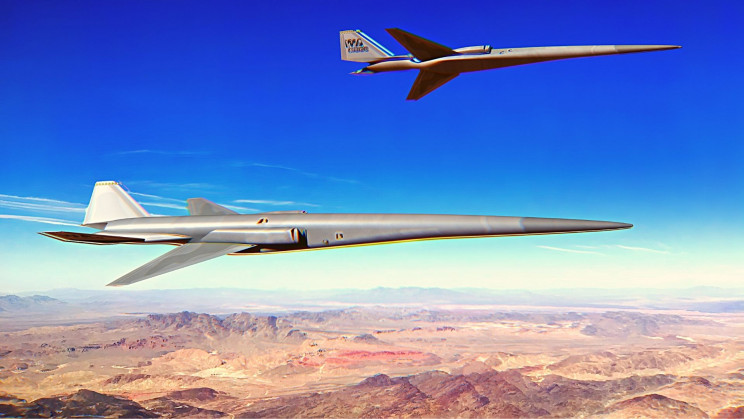Have you seen Top Gun, the famous Tom Cruise movie? In that, there comes a scene where pilots are trained with the help of practice jets. Fast forward to the 21st century, imagine UAVs doing precisely the same to train the US Air Force Pilots. The contract of creating a low boom UAV has been handed over to a transport company. The same has been confirmed by a press release shared with IE via email.
The UAV could provide critical data for the study and ultimate production of supersonic airliners capable of breaking the sound barrier without the loud “boom.”
Exosonic, Inc, an aerospace company, was awarded a Direct to Phase II Small Business Innovation Research (SBIR) contract by the United States Air Force in partnership with Air Combat Command, the Air Force Research Laboratory, and the Presidential and Executive Airlift Directorates. The vehicle will demonstrate technologies directly relevant to Exosonic’s quiet supersonic airliner and build a short-term path to revenue.
“Exosonic is excited to develop the first purpose-built supersonic UAV to aid the USAF in its pilot training mission,” the company said.
“Our vision is to fly people [everywhere at] supersonic [speeds,] with our airliner designed to fly supersonic overland (sic) with a muted sonic boom,” said CEO Exosonic Norris Tie. “The supersonic UAV work is critical to our company’s strategy due to how much we’ll learn about designing, manufacturing, and maintaining supersonic airplanes with our first UAV products. The UAV is also important to our company’s longevity. It will provide profits that we can funnel back into our company and give investors, suppliers, and customers confidence that we can deliver supersonic aircraft to the market before anyone needs to make a multi-billion-dollar investment.”
Once the UAV is completed, it is expected to serve as a close opponent for fighter pilots to confront in flight training, and it could be critical in preparing human pilots for the future of air combat. This is especially relevant in light of the USAF’s inability to prepare new, fully-trained fighter pilots due to limited training budgets and an expanding pilot scarcity. This means that fewer fighter pilots are getting enough live-fire training to compete with actual enemies. Exosonic’s supersonic UAV will act as a viable “mock adversary,” generating high-stress scenarios for fighter pilots to close this training gap.
The UAV can be filled with a variety of payloads and sensors, allowing for a new type of training that covers traditional fighter pilot training. As a result, the US Air Force could save taxpayers millions of dollars by lowering the cost of fighter pilot training and minimising depreciation on current USAF mock rivals aircraft. This also implies that fighter pilots will have more time to devote to blue air training.
“Tactical Air Support is excited to see an emerging supersonic UAV platform that can operate jointly with a piloted contract adversary like the Tactical Air Support F-5 Advanced Tiger,” said Director of Communications Jim DiMatteo of the government contractor Tactical Air Support, who is also an F-5 ADAIR pilot.
With geopolitical tensions escalating and several other countries exhibiting significant UAV technology and artificial intelligence advancements, supersonic UAV training could revolutionise the US Air Force for modern warfare. Furthermore, if Exosonic’s product line grows with new concepts, commercial airliners capable of supersonic speeds without the devastating boom associated with faster-than-sound aircraft could be on the way.

